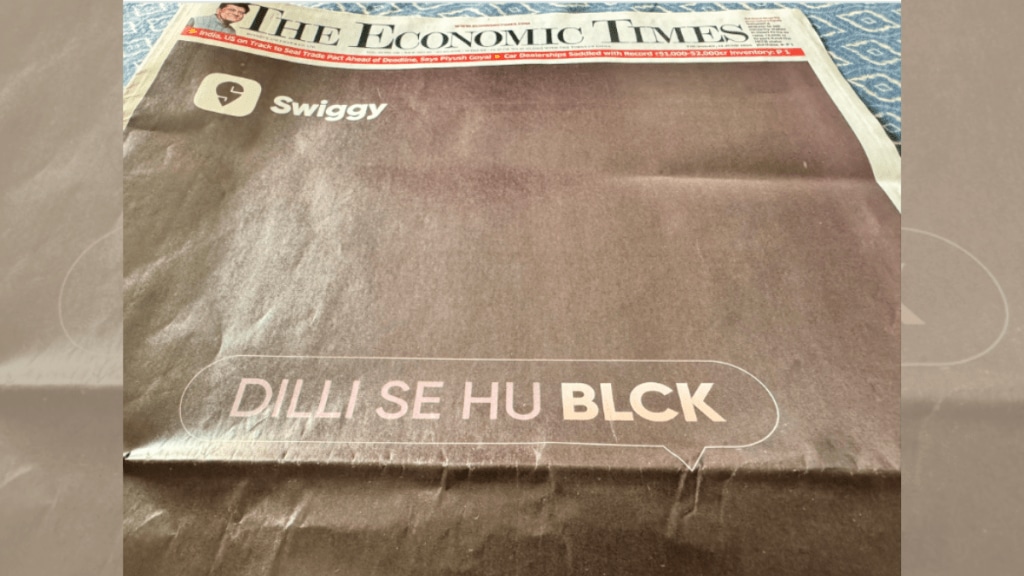A full-page advertisement by food delivery platform Swiggy in The Economic Times has triggered backlash on social media, with critics accusing the brand of using suggestive and borderline offensive language to promote its invite-only service, “oneBLCK.”
The ad features the tagline “Dilli Se Hu BLCK”, which some observers believe mimics a well-known Hindi expletive—censored just enough to be ambiguous. “Notorious advertising allowed on the front page of a prestigious newspaper. This is a play on abusive slang. Amazing how all this is cool and normalised,” journalist Sanket Upadhyay posted on X (formerly Twitter), where the ad has generated criticism. The design, dominated by dark hues, sparse copy, and a bold rendering of the word “BLCK”, has been interpreted as an intentional play on innuendo, aimed at appearing edgy and modern.
“Advertising agencies often strive for edgy and buzzworthy campaigns, constantly pushing boundaries to gauge public reaction. This is especially true when it comes to using expletives, abbreviations, and striking visuals on platforms like billboards and front-page ads. Ultimately, a nation’s advertising tends to reflect its people,” Harish Bijoor, Founder of Harish Bijoor Consults Inc, told the financialexpress.com, mentioning the broader trend this campaign reflects.

“A crucial point to grasp is that what’s used on the street frequently makes its way into advertising. When common phrases and slang are part of daily conversation, advertisers often feel it’s a powerful way to connect with the average person,” he added.
Not the first time
This isn’t the first time an Indian food delivery giant has come under fire for provocative branding. In 2017, Zomato rolled out an outdoor ad that read “MC. BC.”, a supposed reference to “Mac n’ Cheese” and “Butter Chicken.” Yet the abbreviations are also synonymous with explicit Hindi slurs. Though pitched as humorous and clever, the campaign was called sexist and crude by many and was quickly withdrawn after strong online backlash.
Where to draw the line?
However, industry analysts opine that the ad’s impact appears to differ sharply between age groups. “A significant portion of the customer base for brands like Swiggy is Gen Z for whom such abusive slang and use of profanities is normal. Hence, this kind of advertising neither shocks them nor impacts them much unless it is really funny or witty,” Nikhil Rangnekar, CEO at Media Circle, noted. He added that it is the older generation that often feels offended and initiated the conversation about how this is a wrong practice, noting that brands do have a chance of experiencing a negative rub off.
Industry experts warn that chasing attention through controversy is a risky long-term strategy, especially in a diverse country like India. “We believe creativity in advertising should never come at the cost of cultural or social sensitivity,” Yasin Hamidani, Director at Media Care Brand Solutions, commented. “While bold messaging grabs attention, it’s important to stay mindful of public sentiment. Brands must strike a balance between being clever and being respectful, especially in a diverse and vocal market like India.”
Hamidani notes that it might take another 20 to 30 years for Indian consumers to accept such bold messaging. As online reactions to Swiggy’s campaign continue to unfold, if provocation really is an effective brand strategy is something for brands to think of.
